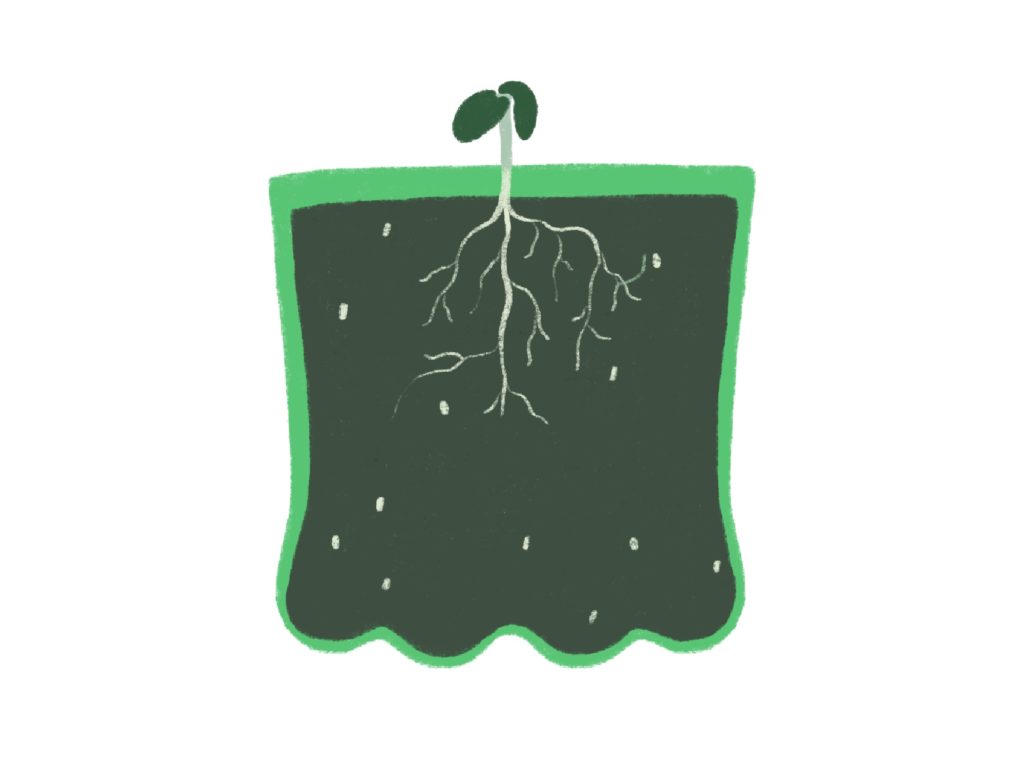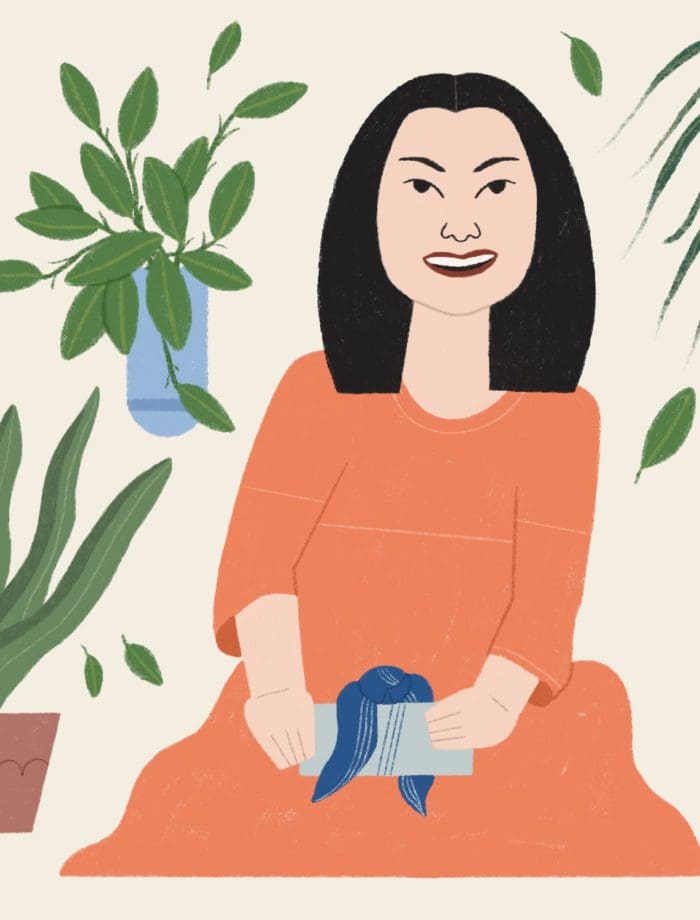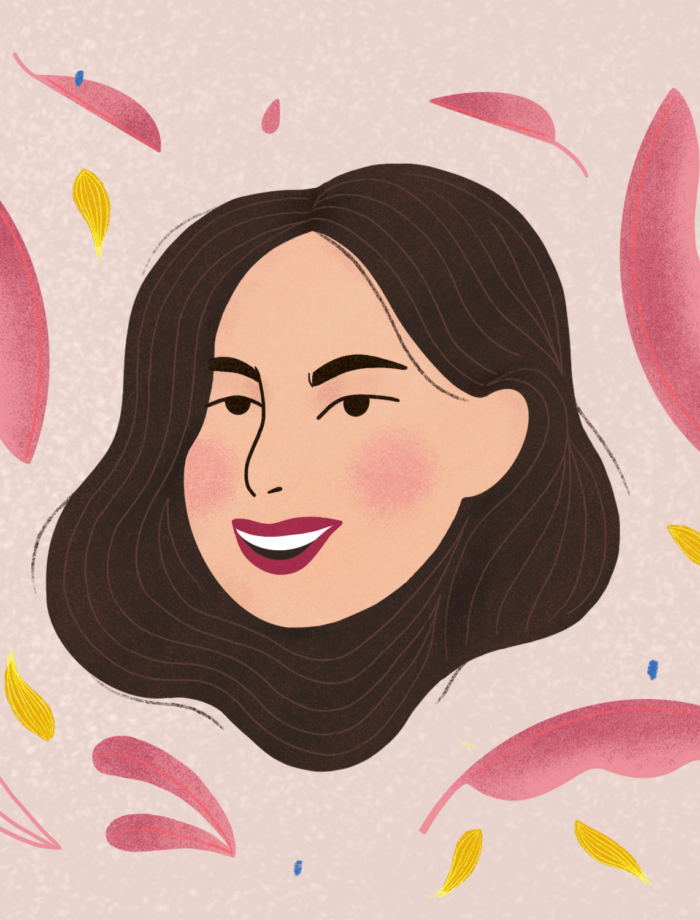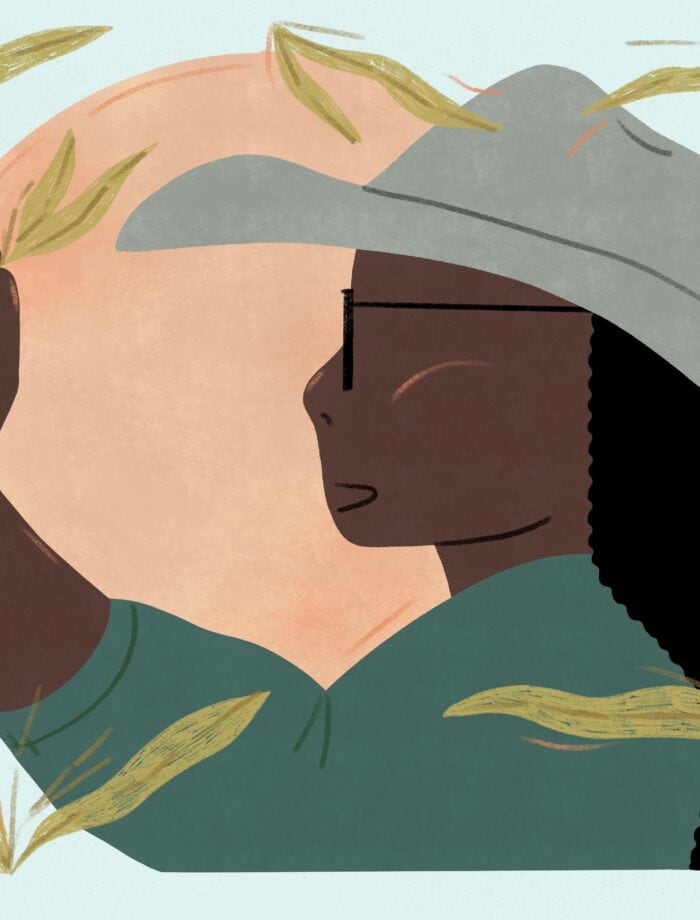Chef and wellness advocate Sophia Roe exudes youthful enthusiasm, but it’s clear she’s wise beyond her years. Behind vibrant plates of vegetables, an infectious laugh, and seriously gorgeous hair, she has deeply compassionate insight that I imagine stems from the adversity she’s overcome.
Every conversation with Soph is like being at sleepover when it’s 2 a.m. and everyone’s walls are down—you’re baring your soul and contemplating life’s big mysteries. She has a way of letting anyone she meets know that they are heard and valued.
I had the pleasure of soaking up some of Soph’s sparkly energy at the cusp of the new decade, and our conversation left me feeling empowered to confront elements of sustainability and food that I’m inclined to shy away from.
Read on for this self-proclaimed food and feelings enthusiast’s take on inclusivity, privilege, new year’s resolutions (one of hers is um… major), and so much more.
On finding a career in food
“Part of what I do is take it back a step further and teach people how to use what they have.”
It was never really part of the plan. I knew that I was inspired by food as a young person just from watching Discovery Channel or PBS, the great chefs of the world would be on and I loved that. But what inspires me most is starvation. I remember being a kid that didn’t get food all the time so it became something I glorified. Like, a peanut butter and jelly sandwich was exciting to me. So hunger in the literal sense led me to focus on the accessibility of food. Obviously sustainability is important to me, but first I just want people to be able to eat period.
Right now I live in a very food insecure part of Brooklyn, it’s pretty deep into Bed-Stuy—not chic Bed-Stuy. And what’s happening there is very similar to what is happening in many places all over the country, where there’s nothing but pawn shops, or bodegas, or liquor stores. That is really what drives the work that I do now.
On addressing food insecurity
I talk about reducing food waste, but there are people that don’t have food at all to waste. So part of what I do is take it back a step further and teach people how to use what they have. I remember teaching a cooking class at a Bronx elementary school and some of these kids had never seen a tomato before. That was when I realized wow, this is much bigger than food waste. We have no idea how much privilege there is in the knowledge that we have.
There’s also an assumption that communities of lower socio-economic status or black and brown communities are not living in a sustainable way, or that because there’s not a health food store in those neighborhoods it’s not a healthy place, and I always challenge that. These communities have had to take care of themselves forever. These are the places where you can walk down streets and see people growing vegetables out of two-liter bottles. These people are figuring out sustainability in their own way, and I try to tell those stories.

“You might feel like you can’t do anything about your privilege but you totally can. You can acknowledge it and support other people.”
On privilege
I want people to know that privilege isn’t bad. I have it. I have a phone, that’s privilege. It’s what you do with it that matters. I always make the joke that people want to come into Bed-Stuy and open up an avocado toast joint. And I get it, but how about you take your marketing skills or your business skills and that $50K that you have lying around and teach people that live in that neighborhood so they can open up their own avocado toast joint. That is how you keep a neighborhood alive. That is how you feed the neighborhood.
Here’s the thing with wellness—you are only as well as the equal sum of your community. You might be this yoga-going vegan taking tinctures and all this stuff, but if your neighbor is starving then so are you. Wellness is tough sometimes. Getting into the nitty gritty of who we are is yucky and uncomfortable, but that’s why we’re supposed to do it. If everything felt good all the time what would be the point of hard work? I guess I just want everyone to get over themselves a little bit and be willing to have these talks.
You might feel like you can’t do anything about your privilege, but you totally can. You can acknowledge it and support other people. Acknowledge that it might be a tiny bit easier for you, so if you see someone trying to open up a small business, talk to them about it. Maybe that person didn’t get to go to college and you did. Can you share a tip or six?
Instead of feeling uneasy, I want people to be like, ‘This is a good thing that I have privilege. That means that I can help, I can create space, I can support my black and brown friends, and let them know that I care about them.’ Once we talk about it then it’s not this weird conversation anymore.
On social media
I use social media in a lot of different ways and I’m really candid and open. I like to write, that’s what I spend a lot of my time doing, so if you’re following me you probably know that I’m going to post long-ass captions. But there’s also a lot that I don’t share. I never put my personal life or relationship stuff on the internet.
I’m not everybody’s favorite thing—not everybody wants to read a long caption about childhood trauma, and also not everybody cares about how to make a cranberry mocktail. I do what I do because I like doing it and I have a super strong, slow growing community that I really appreciate. I’m not the person who’s got a thousand new followers everyday and that’s not what I’m going for.
I’ve become real life friends with a lot of people I’ve met on social media through in-person events. I’ll be like, ‘Oh you’re @susanmakesmatcha. So nice to meet you!’ and then we’re friends [Ed. Note: If your name is Susan and you are interested in ceremonial teas, please go reserve this currently unclaimed Instagram handle].
I don’t have a family to go home to for the holidays. Mother’s Day, Father’s Day, these are very hard times for me and I talk about that stuff openly. Turns out these are hard holidays for a lot of people. Sometimes what I talk about is uncomfortable for people to hear, but it’s necessary. I try to acknowledge that not every day is happy but we’re doing the best that we can. I’m the ‘We’re doing the best that we can’ Instagram.
On New Year’s resolutions
There’s this idea that at the end of the year we’re oozing radioactive juices—like we’re gross. I’m like, ‘I’m alright. I don’t need new year, new me.’
Next year I’ll be 32, so personally I would love to adopt a kid. That’s where I kind of want my personal life to be, which is making me a lot more conscious of every little thing that I purchase and surround myself with.
I want to find more things that I do just because I want to. Whether that’s getting into watercolor, or making ceramics, or taking piano lessons—just learning new skills.That might sound selfish but it’s honestly not. Busier doesn’t always mean more productive. And I personally feel like there are about two hours of every day that I spend doing stuff that I don’t need to be doing, and it’s taking away from my spirit. I call it self-spiritual-gifting, I need way more self-spiritual-giftings in 2020.
On making the most of what you have
I don’t use Amazon but when someone does send me a package—and I’m very very mindful about packages I receive because I don’t want to have anything in my house that I don’t need—I save and use every single box. I stack them under my couch and store clothes in them, like you know how people have Container Store bins? I literally have moving boxes in my closet. And I know it probably doesn’t look very cute, but I’m like, ‘Do I need a Container Store bin? Or can I just use this perfectly good paper box that seems to work fine for me?’ I don’t have any issues with that.
I’m super aware of plastic in general. Not just avoiding it, but also if I have to have it, how I can make the most of it.
Like when you go to the olive bar at Whole Foods and you forget your container so you use a plastic one, ask yourself what else you can do with it after. Maybe you store your dry lentils in it. Half of my water glasses are old almond butter jars. It’s almost a little chic and artsy in a fun way. Everything is about reframing. It can be mismatched and hideous or it can be quirky and unique—what do you feel?

I recently saw this woman on a plane take out a deodorant and rub it all over her face. I was like, ‘No sis, you cannot.’ And I finally asked her, ‘What was that that you just put on your face?’ And she said, ‘It’s shea butter, I repurpose my deodorant containers.’ So it turns out this woman is a genius. And it’s actually so easy to do! So even if you’ve got this one empty deodorant container you can fill it with any solid butter that you purchase in bulk. It makes it so easy to rub it on your legs. I think sustainability is all about creativity.
The place that we’re in right now is so hard, it’s all doom and gloom, but using the situation you’re in to inspire new things is a way to reframe how it feels. Instead of it feeling like pressure it can be, ‘Let me use my imagination. What can I make with this plastic that I have instead of throwing it out? Is there something I can create?’ Even if it’s just that this tub becomes a place to keep my rubber bands. I’m always trying to look at things like that because recycling it is not enough. We really need to be better reusers.
On her new project
I just launched Pillowtalk Sessions, which is a monthly event series to get people off of their phones. I love panels and talks, but I’ve found that the best conversations always happen after the actual presentation. That’s when people usually keep it the most real. I call it the pillowtalk part—people get cozy and comfortable, they just listened to whoever talked for an hour and now they’re ready to share.
At each event I bring in an expert to speak on a topic that I think is valuable. The first one was on stress. We had a woman from Maha Rose who does breathwork, and another woman who works with healing oils and scents. Those are things that seem kind of woo woo and strange but they’re actually very accessible. It doesn’t cost a penny to breathe, and essential oils and herbs are pretty low-cost when it comes to wellness products. Inclusivity is important to me and I thought those were two accessible ways to deal with stress that you don’t hear about much.
In December we did a holiday market and all of the proceeds went to the Women’s Prison Association, and the one this month is going to be geared towards our relationship to eating.
On expanding the sustainability conversation
I’ve noticed recently that we’re all out here talking to ourselves. The population isn’t just a bunch of 18 to 35-year-olds—we’ve got lots of other people out there contributing to this thing that they don’t necessarily believe is a real problem [read: climate change]. Sometimes for older people it’s like, ‘Why is this suddenly an issue?’
I want to talk about sustainability in a way that makes it a little easier. Narrowing it down to food for example, 40 percent of food in the U.S. is wasted. When people hear 40 percent they understand that’s a big number. So then you can say, ‘Okay you got me, so now think about what else you are throwing away when you’re throwing away that food. You’re throwing away 40 percent of the resources, the labor, the water, the fertilizer.’ It can be helpful to explain it in a really granular way. And then I follow up with an application like a cooking class—who doesn’t love a cooking class? Or a workshop where we use mangoes and pickle the skins. There’s a million ways to prevent food waste but you’ve got to get the lesson there. You’ve got to get people to understand that this is a problem and believe it is real before they will try to make a difference.

A favorite recipe to share
Crisp Pickled Green Beans
1 pound fresh green beans
2 garlic cloves
1 tsp mixed peppercorns
2 tbsp chopped ginger
1 1/2 cups rice wine vinegar
1/3 cup water
1/2 tsp sea salt
1 tbsp maple syrup
1 bunch cilantro
2 shallots, sliced thinly
Prep mason jars. Make sure green beans are cut 1/4 an inch shorter than your mason jars. In a large saucepan, stir together the garlic, rice wine vinegar, maple syrup, shallot, peppercorns, water and salt. Bring to a rolling boil over high heat. In each jar, place 1 sprig of cilantro. Pack green beans into the jars so they are standing on their ends. Spoon the vinegar mixture into the jars, filling to within 1/4 inch of the tops. Be sure to discard garlic. Seal jars with lids and rings. Place jars in a hot water bath in large pot or Dutch oven so they are covered by 1 inch of water. Simmer (being sure not to boil) for 10 minutes. Let jars cool to room temperature. Make sure jars are sealed properly. Let pickles ferment in the refrigerator for 2 to 3 weeks before eating. Enjoy!
Thank you for creating space for these conversations, Soph. Less shaming, more reframing in 2020!
Follow @sophia_roe on Instagram for real talk on childhood trauma, cranberry mocktails, and cardboard-chic underbed storage. And if you’re in NYC make sure to check out future Pillowtalk Sessions—catch her teaching juicing and sauce making next week at The Butcher’s Daughter.






